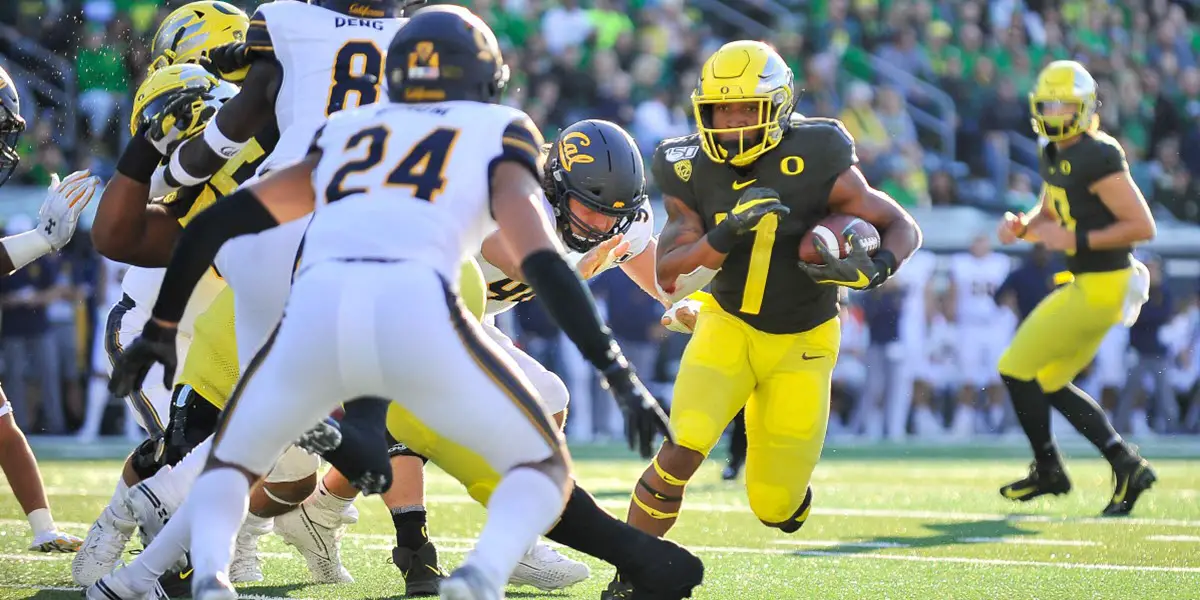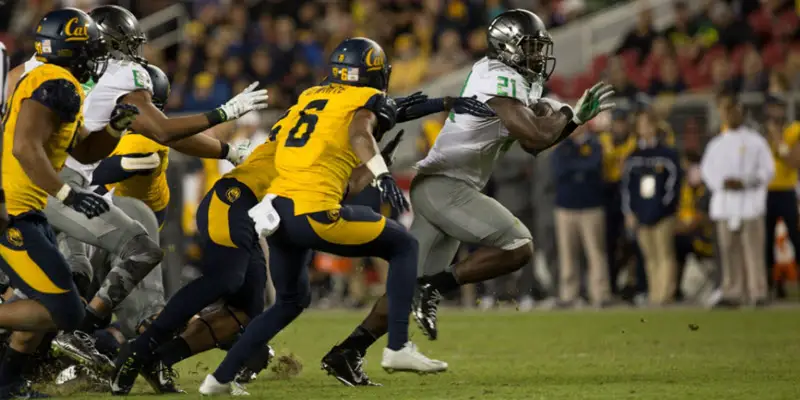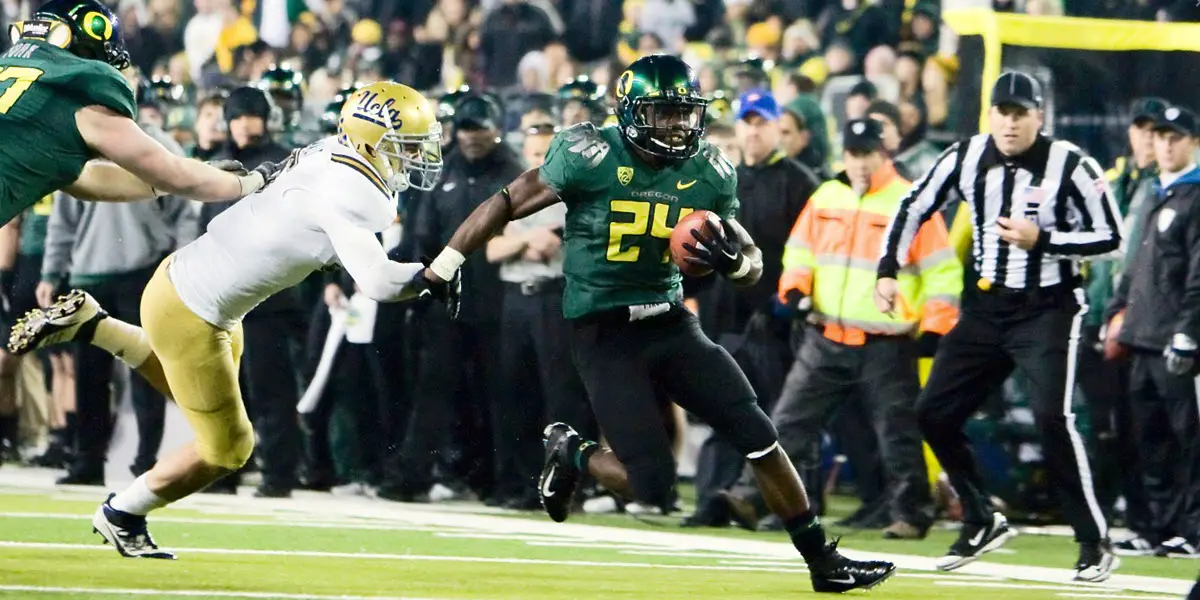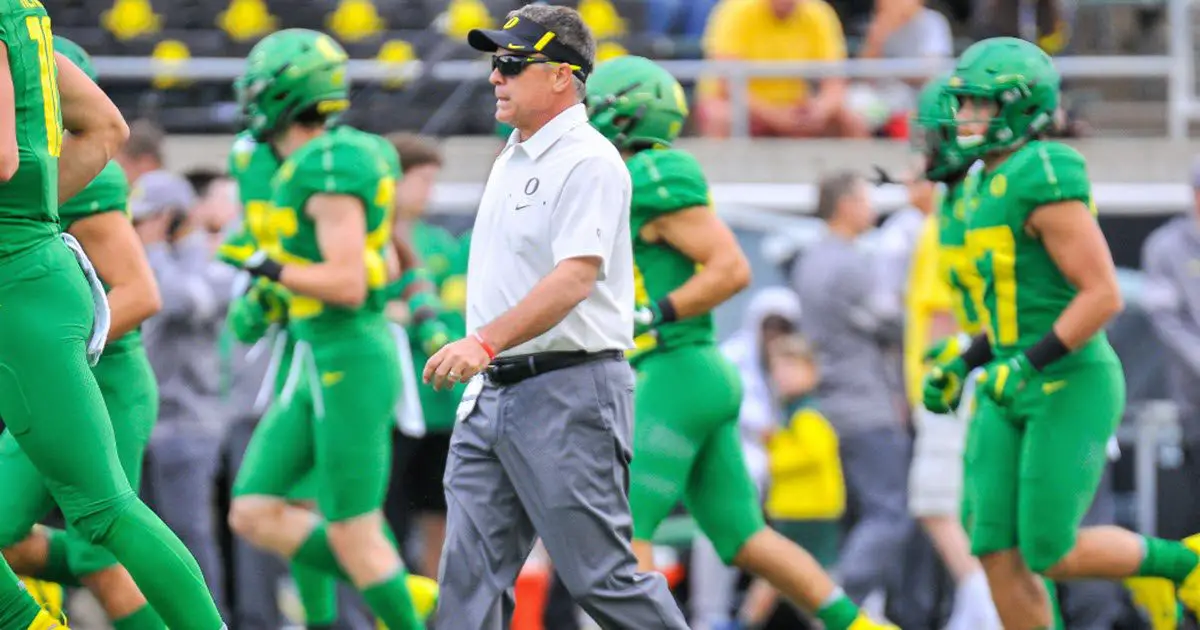There is a bit of a perception out there that Coach Jim Mastro might not be holding up his end of the bargain as the Oregon Ducks’ running backs coach. It’s something that I’ve heard from a handful of people, but to be honest, it’s not a story that I’m buying. I’m not buying it because I went back and took a look at the numbers. Not just numbers from this season, but numbers stretching 12 years into the past.
There is a single running back stat that stands above the rest. It’s not number of touches; that can be affected by gameplan and splitting reps. It’s not total rushing yards, or average yards per game; those can be affected by number of touches. I want to know what a back does when the ball is in his hands. I want to know his average yards per carry.

CJ Verdell is working for a place among Oregon’s best backs.
Of course, yards per carry can also be dependent on how well the offensive line is performing, but almost every stat in football is dependent on more than one position’s performance. When talking about yards per carry, all four running backs in Oregon’s backfield rotation have improved over their numbers last season.
In 2018, CJ Verdell posted an average of 5.0 yards per carry. This season, that number has increased a yard and a half to 6.5 yards per carry. Travis Dye has improved from 5.3 to 5.9 yards per carry, and Darrian Felix has improved from 3.4 to 5.7. Cyrus Habibi-Likio has improved the most, from 2.0 to 4.1 yards per carry, due in part to being used as more than a goal-line back this season.

Royce Freeman breaks free.
Altogether, Oregon’s main backs have gone from gaining 3.9 yards per carry to 5.6 yards per carry overall. That 2018 number excludes Tony Brook-James, as he’s not part of the current roster. But even if you add him back to the mix, the current rotation still has improved by 1.4 yards per carry over the 2018 crew. That’s a pretty good progression for a rotation that consists of four sophomores.
Those aren’t the numbers of a coach who is faltering at his job. To take four freshmen and increase their yards per carry average by nearly two yards in their sophomore campaign is pretty good.
Since Coach Chip Kelly became Oregon’s offensive coordinator in 2007, there have only been three leading rushers to top Verdell’s 6.5 average. Also, between 2007 and 2017, the leading back gained an average of 6.3 yards per carry, so Verdell is right in the same company.

Kenjon Barner doing his thing in the 2011 Pac-12 Championship game.
If you add everyone who has touched the ball into the mix, including quarterbacks, the average is 5.1 yards per carry. It is now Coach Mario Cristobal’s second year. In Coach Kelly’s and Coach Mark Helfrich’s second seasons as head coach, those numbers were 5.9 and 5.5 yards respectively. To be right in the ball park with two teams that ended up in the national title game — with a better defense as well — is a good place to be.
I am on board with the progress that each back has made under Coach Mastro from year one to year two. The vision of each back has been the noticeable improvement. With Coach Mastro’s track record, we probably shouldn’t be surprised about that. Vision is one of the most important tools that an RB can possess, but also one of the longest to develop.
As Coach Marcus Arroyo’s version of the option game continues to expand with every game, I wouldn’t be surprised to see Coach Mastro’s guys get even better.
Coach Eric Boles
Newark, Ohio Top Photo Credit: Kevin Cline
 Bob Rodes, the FishDuck.com Volunteer editor for this article, is an IT analyst, software developer and amateur classical pianist in Manchester Tennessee.
Bob Rodes, the FishDuck.com Volunteer editor for this article, is an IT analyst, software developer and amateur classical pianist in Manchester Tennessee.
Related Articles:
Seven Offensive Coordinator Candidates for the Oregon Ducks
Five Candidates to Replace OC Marcus Arroyo
Has Oregon Turned the Corner on Offense?
Ducks, Taggart Punish Beavers; Earn Bowling Trip
Textbook Defense, Herbert's Return Energize Duck Victory; Civil War Next
Ducks (Coaches and Players) Need to Focus Against Arizona
Eric resides in Central Ohio, just outside the capital city of Columbus. He is a former offensive assistant and return game coordinator for the Ohio State – Newark/Central Ohio Technical College Titans football program.
He is an OSU-N graduate, having completed a Bachelor of Arts program in psychology.

